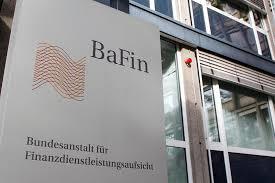“Pension funds worldwide are in big trouble.” This bleak sentence starts a working paper on ‘How derivatives can help solve the pension fund crisis’, written by the Cass Business School1.
Factors such as increasing life expectancy and changes in accounting rules have made it difficult for many pension fund managers to generate enough investment income to match their liabilities. The current environment of low interest rates and the concern over how stock markets will perform in the future has exacerbated the situation.
Even if the consensus remains that investing in stocks will provide an extra return over the risk-free rate of investing in a safe instrument, such as government bonds, it is generally agreed that the equity risk premium has fallen. In other words, how much extra income can be generated by an investment in stocks continues to be a subject very much open for debate.
How can pension funds deal with the ongoing and in some cases critical dilemma of generating sufficient investment returns to match their liabilities? Other than increasing contributions and closing schemes to new members, a possible solution is to increase asset allocation into stocks, even if, as the Cass Business School points out, “increased risk aversion and the terrible performance of the world’s stock markets, however,… point the other way.”
If investing in the world’s stock markets is accepted as a solution, a possible implication is that pension funds will have to manage their investments far more actively and assume greater risk than they have done in the past. It will no longer prove sufficient for money to be simply invested in equities in a buy and hold strategy in the expectation that at some future date, the market will have risen significantly to provide a meaningful return.
The usefulness of incorporating derivatives into portfolio risk management cannot be emphasised enough. They can help pension funds protect their portfolios in downward- moving markets and also provide access to alpha. Alpha is defined as the extra return awarded to the investor for taking risk, instead of accepting the market return. Using derivatives allows fund managers to leverage against the assets they have in their portfolios to improve returns and/or mitigate risk.
Active fund managers will increasingly look to capitalise on the efficiencies offered by the use of derivatives. In short, when used properly, derivatives are extremely powerful tools for the management of portfolio risk and also instruments that can actually be used to boost investment returns.
Eurex’s wide product range facilitates risk management and the generation of alpha in the two predominant assets typically invested in by pension funds – fixed income and equity. In the fixed-income sector, the exchange lists futures and options on futures that cover the entire euro-denominated yield curve. Similarly, in the equity segment Eurex lists national, pan-European, sector and global equity index futures and options as well as European and U.S. stock options.
These contracts display a high level of correlation to many of the assets that pension funds have under management, which is an important consideration for managing risk. For instance, given the high correlation between Euro Bund futures, for example, and the 10-year German government bonds they are based on, the futures and options on futures can be used effectively to hedge the underlying bond positions.
Numerous examples illustrate how Eurex’s products can be used for effective risk management (see www.eurexchange.com for more details). An obvious one is the utilisation of futures to manage cash flows both in and out of funds. Doing this can help keep trading costs down by reducing the number of cash trades required to balance the fund, as well as maintaining or reducing exposure to a particular market until it is beneficial to carry out the actual cash transaction.
Futures can also be used to facilitate portfolio rebalancing. For example, if a fund manager decides that bonds are likely to outperform equities over the short to medium term, he can reduce his equity position and increase his fixed-income exposure by selling Dow Jones Euro STOXX 50 futures and buying Euro Bund futures. Of course, an obvious question is why not just sell and buy the underlying cash instruments if it has been decided to under- or overweight a particular asset class?
The answer again comes down to efficiency. Because of their high liquidity, use of Eurex’s derivatives reduces both the impact on the underlying market, which can be distorted when big asset shifts take place, as well as the considerable execution risk when having to buy or sell the numerous different issues making up the portfolio. Rapid exposure to the market can be gained through the use of Eurex’s highly liquid products in a way that is not necessarily feasible in the cash market, where a large number of individual trades may be necessary to gain or reduce the same level of exposure.
Futures are useful for symmetric hedging, where movements in the derivative will offset or mirror movements in the cash, canceling out losses and gains. This type of hedge is useful when a fund manager feels that a strong move in a certain direction is extremely likely. More common would be the use of options to create an asymmetric hedge, designed to keep a portfolio’s value above, below or within a certain range.
An example would be the purchase of a put option and thereby obtaining the right, but not the obligation to sell an asset. Puts can provide various degrees of downside protection. However, when competition is increasing to show a better return than its peers, many funds may well be reluctant to spend money on buying options, even if they do have obvious benefits from a risk perspective.
A common solution is to initiate a zero-cost collar. This is particularly useful if a fund manager’s view is that a market is set to fall. The position is often initiated by purchasing an out-of-the money put (an option with an exercise price lower than the prevailing market) and by selling an out-of-the-money call (an option with an exercise price higher than the market). If the premiums for the put and the call are equal, the hedge has been initiated at zero cost (see figure).
Clearly such a strategy does not remove risk, but it is one way a fund manager can leverage on his underlying assets to gain downside protection. If the manager’s view is wrong and the market rises, the put will expire worthless and he may be exercised on the call option he has sold. This would require the fund manager to deliver the underlying asset to whoever bought the option, but at least he has sold the underlying assets at a level higher than the market was trading at when he sold the calls.
The flexibility of Eurex’s product range enables sophisticated users to create their own ‘guaranteed’ products. Typical guaranteed products are constructed by the purchase of a safe asset, such as a bond, with the interest income being used to buy call options on, for example, stocks. Constructing similar strategies using derivatives can be used by pension fund managers to protect returns in their funds.
The benefits of doing this on an exchange rather than over-the-counter are numerous, in particular they include:
q Transparency,
q Full anonymity,
q The ability to leverage and trade on margin,
q A significantly reduced counterparty risk as a result of Eurex’s use of a central counterparty.
In conclusion, Eurex’s derivatives products present numerous alternative scenarios for fund managers to invest in the fixed-income and equity markets efficiently. They can provide various degrees of portfolio protection, from 100% symmetrical to partial asymmetric hedging. Alpha can be gained by leveraging on assets under management or by even going short of the market, something that can be extremely difficult in certain cash markets. While this may require a strong conviction on the part of a fund manage to break away from the herd, the tools are already in place if he chooses to do so.
1 van Capelleveen, H F, Kat, H M and Kocken, T P (2003), ‘How derivatives can help solve the pension fund crisis’. Working Paper. Cass Business School, City University



























No comments yet